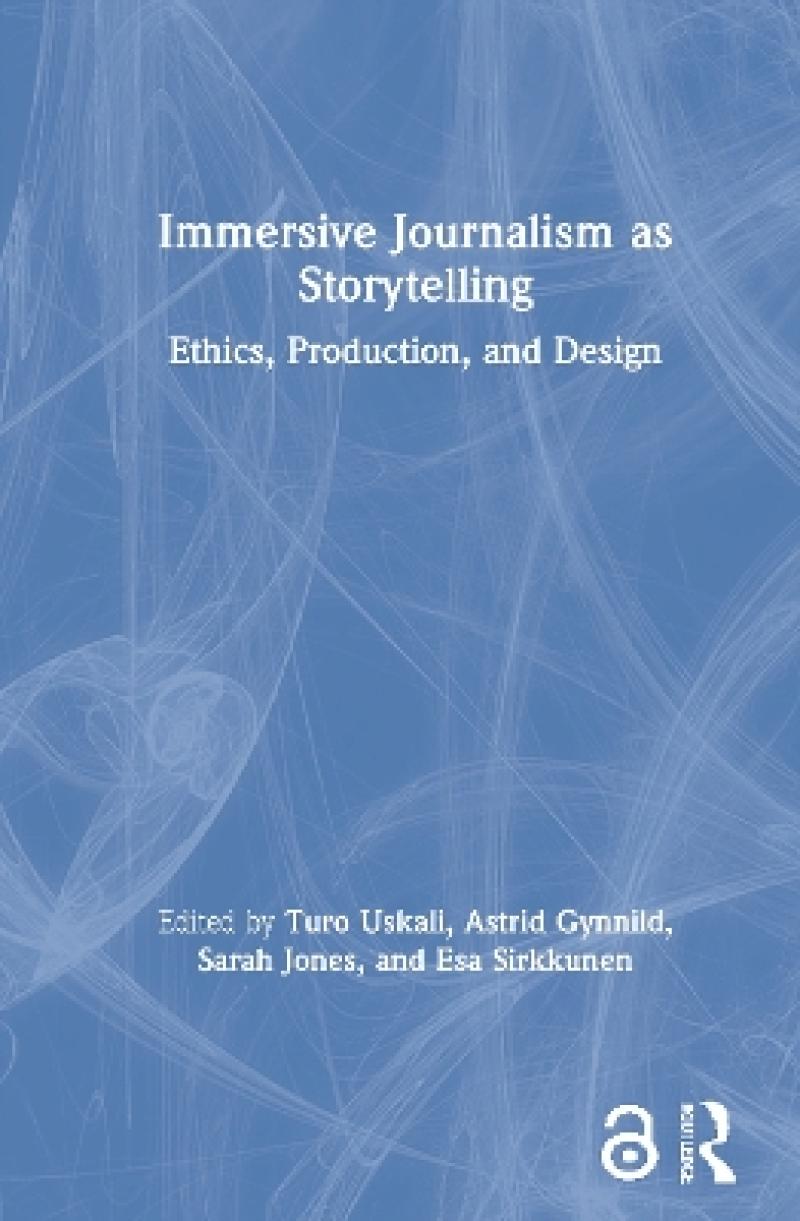This book sets out cutting-edge new research and examines future prospects on 360-degree video, virtual reality (VR), and augmented reality (AR) in journalism, analyzing and discussing virtual world experiments from a range of perspectives.
Featuring contributions from a diverse range of scholars, Immersive Journalism as Storytelling highlights both the opportunities and the challenges presented by this form of storytelling. The book discusses how immersive journalism has the potential to reach new audiences, change the way stories are told, and provide more interactivity within the news industry. Aside from generating deeper emotional reactions and global perspectives, the book demonstrates how it can also diversify and upskill the news industry. Further contributions address the challenges, examining how immersive storytelling calls for reassessing issues of journalism ethics and truthfulness, transparency, privacy, manipulation, and surveillance, and questioning what it means to cover reality when a story is told in virtual reality. Chapters are grounded in empirical data such as content analyses and expert interviews, alongside insightful case studies that discuss Euronews, Nonny de la Peña’s Project Syria, and The New York Times’ NYTVR application.
This book is written for journalism teachers, educators, and students, as well as scholars, politicians, lawmakers, and citizens with an interest in emerging technologies for media practice.
The Open Access version of this book, available at http://www.taylorfrancis.com/books/e/9780367713294, has been made available under a Creative Commons Attribution-Non Commercial-No Derivatives 4.0 license
This book sets out cutting edge new research and examines future prospects on 360-degree video, virtual reality (VR) and augmented reality (AR) in journalism, analyzing and discussing virtual world experiments from a range of perspectives.
- Introduction: What is Immersive Journalism?
-
Part I: Storytelling
- Exploring the Immersive Journalism Landscape
-
Esa Sirkkunen, Jorge Vázquez-Herrero, Turo Uskali, and Heli Väätäjä
- Case Euronews: A Low-Cost Approach to Immersive Storytelling
-
Joakim Vindenes and Astrid Gynnild
- Global Perspectives of Immersive Journalism
-
Sarah Jones
Part II: Ethics
- The Impact of Emotions in Immersive Journalism
-
Turo Uskali and Pasi Ikonen
- Project Syria: Accuracy in Immersive Journalism
-
Siri Flatlandsmo and Astrid Gynnild
- Promises and Perils in Immersive Journalism
-
Deborah G. Johnson
- It’s Not Just about Empathy: Going beyond the Empathy Machine in Immersive Journalism
-
Sarah Jones
Part III: Production and Design
- Place-Based Journalism, Aesthetics, and Branding
-
David O. Dowling
- Case Study: Creating A Business Value in Immersive Journalism
-
Ilona Ilvonen, Joel Vanhalakka and Nina Helander
- The Hierarchy of Needs for User Experiences in Virtual Reality
-
Chelsea Kelling, Heli Väätäjä, Otto Kauhanen, Jussi Karhu, Markku Turunen, Vesa Lindqvist, and Pasi Ikonen
- Immersive Gaming as Journalism
-
Jonne Arjoranta, Raine Koskimaa and Marko Siitonen
- Augmented Reality as News
-
Pasi Ikonen and Turo Uskali
Part IV: Education
- Teaching Immersive Journalism
-
Turo Uskali and Pasi Ikonen
- Immersive Journalism as Witnessing
-
Lars Nyre and Joakim Vindenes
- Forecasting Future Trajectories for Immersive Journalism
Turo Uskali, Astrid Gynnild, Esa Sirkkunen, and Sarah Jones
Produktdetaljer
Biografisk notat
Turo Uskali is an Associate Professor and Head of the Journalism program at the University of Jyväskylä, Finland. His research and teaching focus on the interplay of innovations and journalism, and the future of media industries.
Astrid Gynnild is a Professor and Head of the Journalism Research Group at the University of Bergen, Norway, and Principal Investigator of the ViSmedia project. Her current research and teaching focus is on visual journalism, new technologies, and innovation foresight.
Sarah Jones is Deputy Dean at De Montfort University, UK. Sarah is listed in the top 15 global influencers in VR, is a Google Jump Creator, and has advised the UK Government on immersive technology. Sarah has published extensively on immersive and emerging media.
Esa Sirkkunen works as a senior researcher at Research Centre COMET at the Tampere University, Finland. His research focuses on assemblages of digital technologies and journalism, and on broader themes like social theory, privacy, and freedom of speech.
